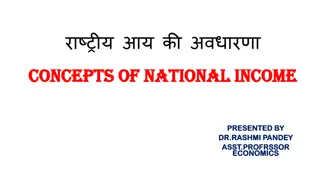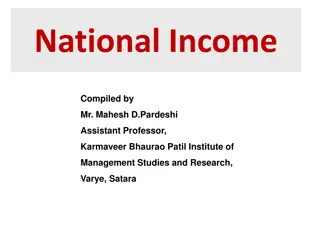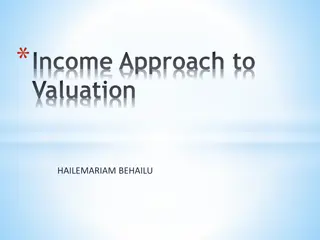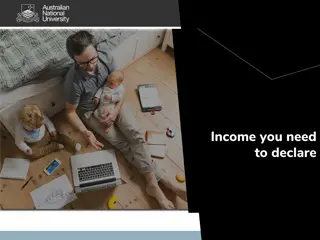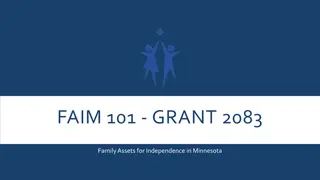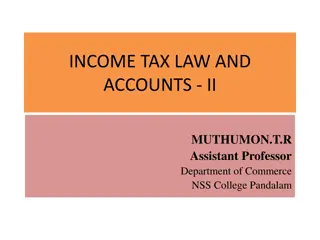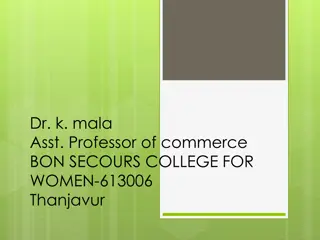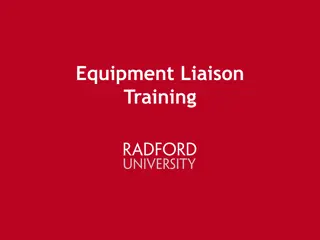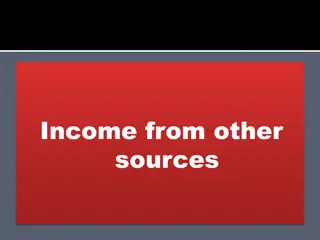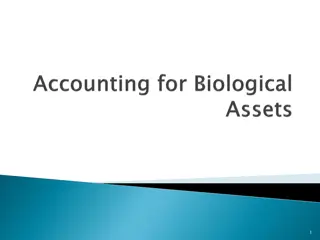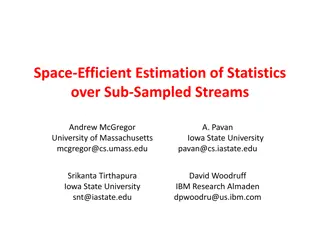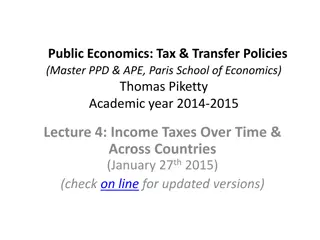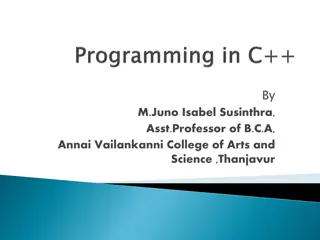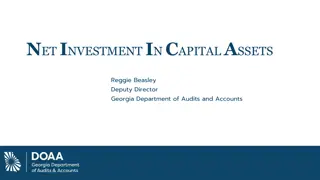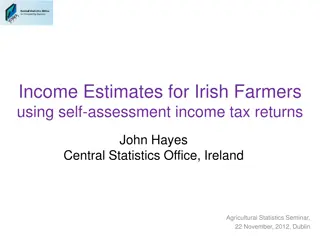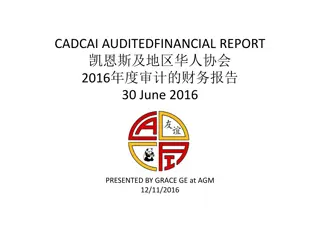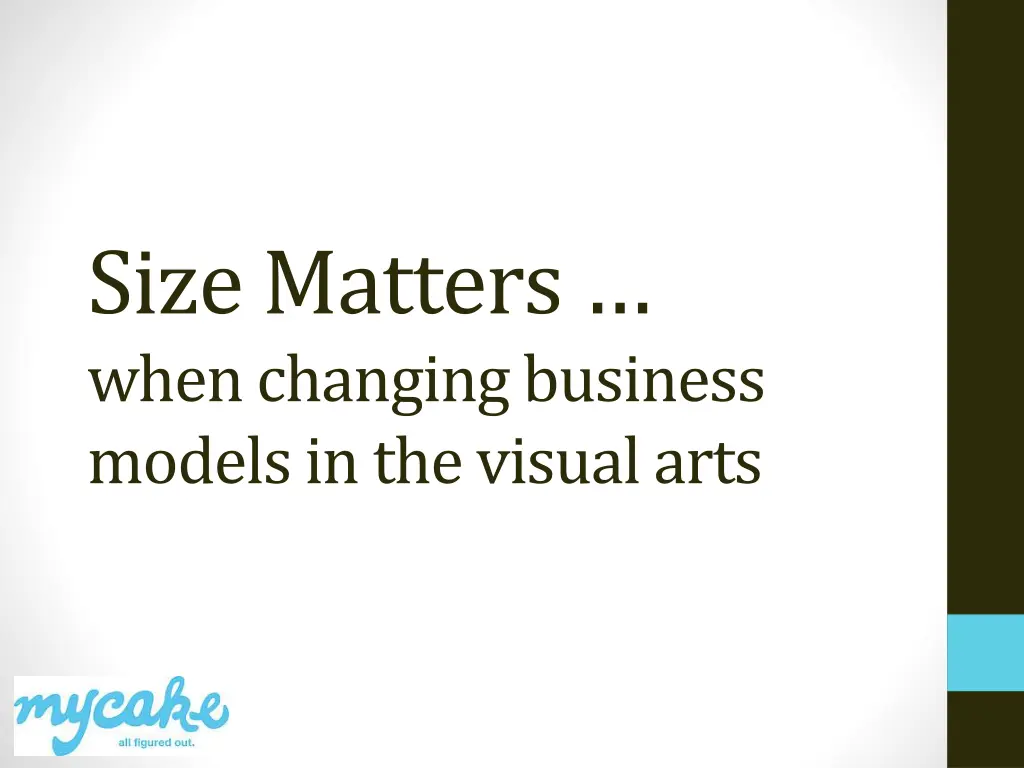
Changing Business Models in Visual Arts: Exploring Key Concepts
Dive into the world of business models in the visual arts, understanding the importance of size, different types of activities, key points of difference, funding challenges, and the LUX mix. Explore innovative approaches for artists at various career stages and the evolving landscape of revenue generation.
Download Presentation

Please find below an Image/Link to download the presentation.
The content on the website is provided AS IS for your information and personal use only. It may not be sold, licensed, or shared on other websites without obtaining consent from the author. If you encounter any issues during the download, it is possible that the publisher has removed the file from their server.
You are allowed to download the files provided on this website for personal or commercial use, subject to the condition that they are used lawfully. All files are the property of their respective owners.
The content on the website is provided AS IS for your information and personal use only. It may not be sold, licensed, or shared on other websites without obtaining consent from the author.
E N D
Presentation Transcript
Size Matters when changing business models in the visual arts
Overview Couple of key models for context Two types of activity Key points of difference Two types of assets Supply side & demand side income types The key ideas in Size Matters
innovative Mid-career Emerging local international Established Retail traditional
Two types of activity Second order: Takes assets accrued in first order Seeks to develop them into products & services that have a commercial value Disconnects from labour costs and is therefore more scalable First order: The creative core Grant funded Not expected to generate a financial return Delivers a cultural & social return Intrinsically connected to the expert labour force in the organisation Eg - exhibition Eg - merchandise
The trouble is The pot of funding to pay for first order activities is decreasing Less gov t money Private Foundations endowments are worth less But even in good times it was hard to add value to supply side cash You only get X% of the cost of delivery No (profit) margin so don t have spare to pay for new & speculative
Two key points of difference First order 1. Second order 1. Revenue linked to market demand Revenue connected to cost of production as intrinsically linked to labour costs Grant funding means limited by supply side economic factors 2. 2. Market models means driven by demand side economics Acknowledgements: Proboscis, SCAN, Blast Theory
The LUX mix Grants Products & Services Product sales Policy dev t Artist dev t Consultancy & other services Publishing Commissioning Distribution & loan of works Licensing/franchising of the LUX model Education, access & advocacy Research & Teaching Preservation, digitisation & public access Research Org. & Indiv. donors Donors & Patrons Trusts & Foundations 1st Order 2nd Order
How do I Determine which second order activities are right for my organisation? Avoid second order activities being seen as a financial wart on the creative face of the organisation?
What are my tangible & intangible assets? Intangible Assets: Individual & organisational expertise & experience Reputation, brand & goodwill Intellectual property Research skills Audience & customer base Education reputation & resource Methods & processes Tangible Assets: Buildings Archives Collections
What income can you derive from Tangible assets? Buildings Caf & catering Shop & retailing (incl. online) Tickets & events Space hire Archives & collections Products & merchandise - dvd s, books, reproductions, posters etc Lending fees
What income can you derive from Intangible assets Staff sector knowledge Consultancy Contracts (public & private sector) Products eg publications, films etc Research (academic & private) Intellectual property Licensing the use of the IP Sale of the IP Spin out of commercial products & services
What income can you derive from Intangible assets Research Subcontractor fees from HEI based research projects Share of IP generated Audience & customer base A USP that HEI s value re research Donors & members Education reputation & resource Public sector contracts Sales of products & services Brand Sponsorship & partnership
Demand Side Supply Side Tangible Asset Based: Tickets Collection Loans Retailing Caf & Catering Space Hire Grant Based: Gov t & LA Trusts & Foundations EU Arts Org. Intangible Asset Based: Products & Services Research Partnership & Sponsorship Contracts Donors & Patrons Arts Income Types

